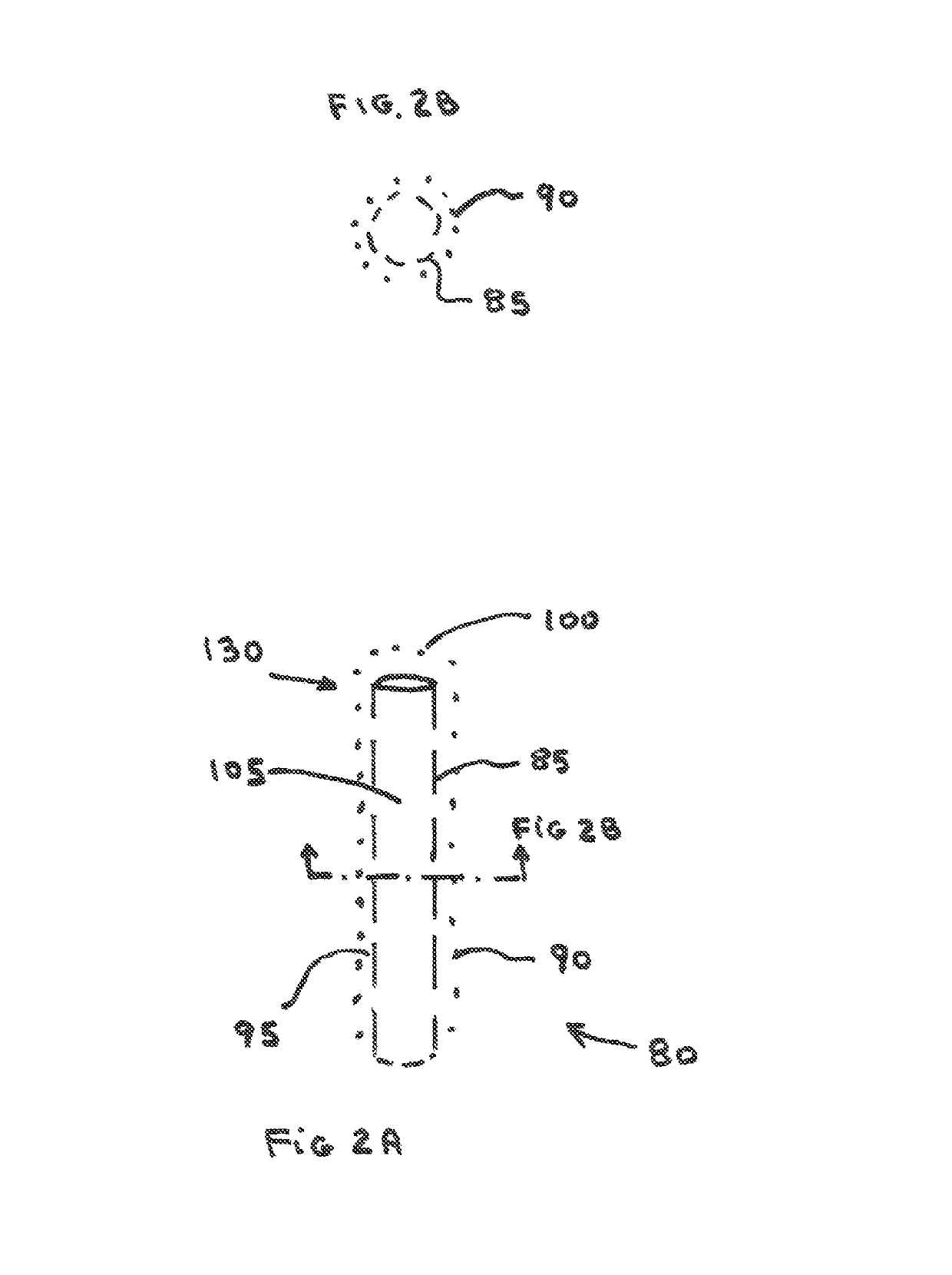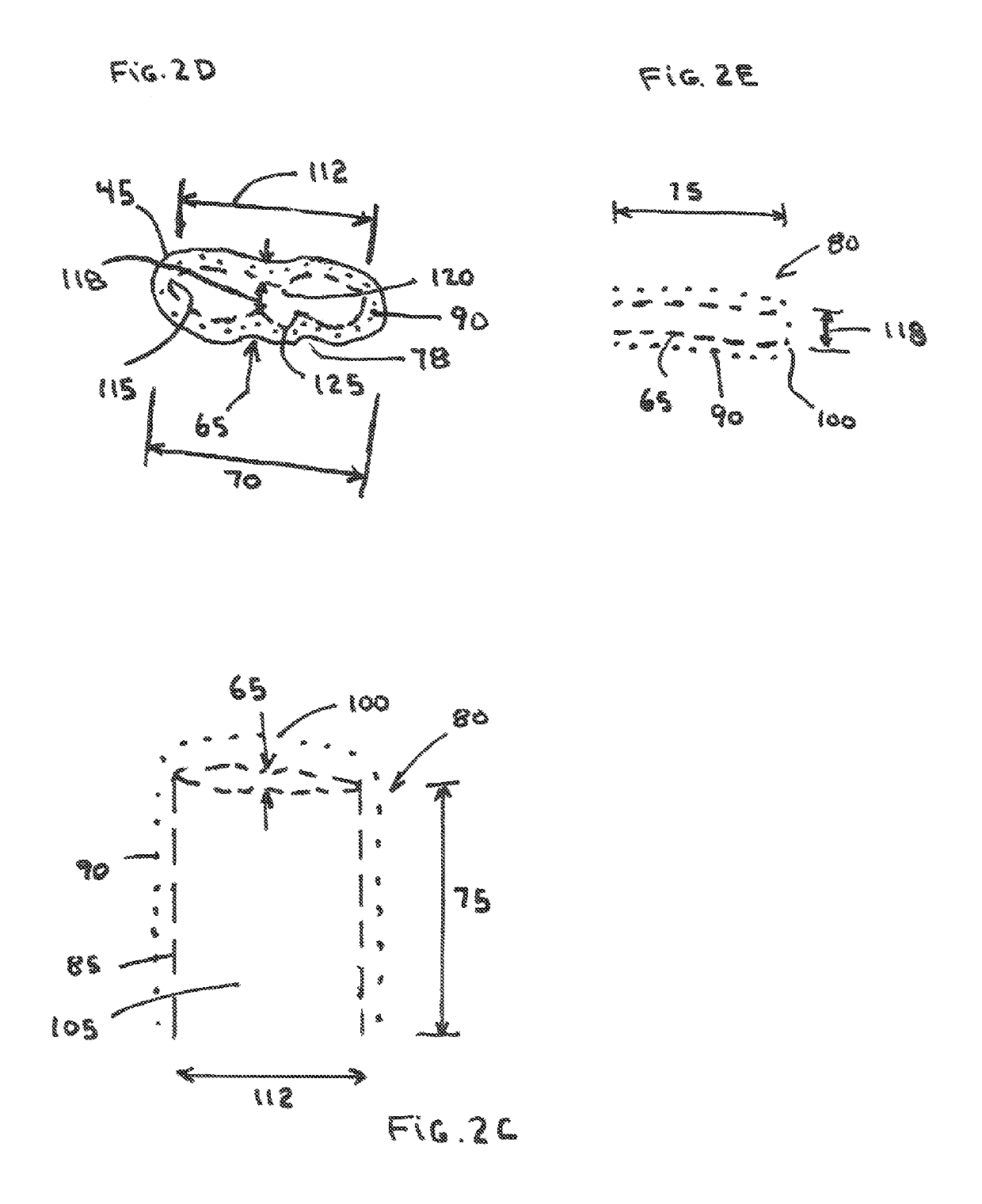Perivalvular occlusion device and methods
a perivalvular occlusion and valve technology, applied in the field of perivalvular occlusion devices and methods, can solve problems such as occlusion of leakage channels, and achieve the effects of reducing the risk of occlusion
- Summary
- Abstract
- Description
- Claims
- Application Information
AI Technical Summary
Benefits of technology
Problems solved by technology
Method used
Image
Examples
Embodiment Construction
[0086]FIG. 1A shows the anatomy of the aortic root (5) showing the aortic sinus (10) joined to the left ventricle, LV (15). The native aortic valve leaflets (20) are attached to the annulus (25) and have been pushed to the side via a TAVR stented device (30) that contains TAVR replacement leaflets (35). Calcium nodules (40) located on the back surface of the native leaflets have created a channel (45) that travels between the TAVR stented device and the native leaflets. The channel (45) extends from the aortic sinus past the aortic annulus (25) and into the left ventricular outflow tract, LVOT (50). This channel (45) creates a perivalvular leak that allows retrograde passage of blood from the aorta (55) directly to the LV (15) during diastole.
[0087]Looking at a cross sectional view of the aortic sinus, as shown in FIG. 1B, one can see that the channel cross-section (60) has an oval or crescent-like shape that extends around a portion of the perimeter of the TAVR device. The channel ...
PUM
 Login to view more
Login to view more Abstract
Description
Claims
Application Information
 Login to view more
Login to view more - R&D Engineer
- R&D Manager
- IP Professional
- Industry Leading Data Capabilities
- Powerful AI technology
- Patent DNA Extraction
Browse by: Latest US Patents, China's latest patents, Technical Efficacy Thesaurus, Application Domain, Technology Topic.
© 2024 PatSnap. All rights reserved.Legal|Privacy policy|Modern Slavery Act Transparency Statement|Sitemap



